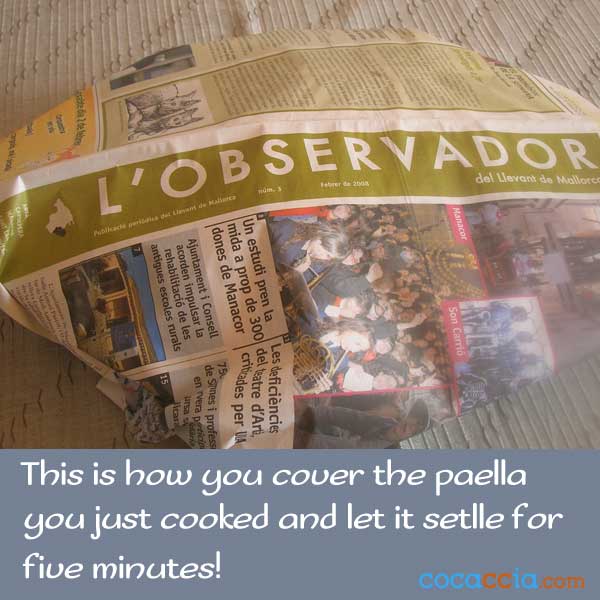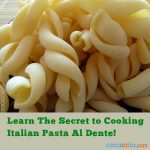More than thirty years ago the Catalan author Josep Pla already complained about the intolerable abuse that paella suffered right and left, It’s a scandal, he wrote.
From the humble origins of paella when it was made with water voles that most of us wouldn’t touch now to today’s amazing baroque and appalling extravagancies in regions far away from its birthplace that Valencians look with disbelief, paella has become a very famous rice dish throughout the world.
It’s mainly for that reason that the term Paella Valenciana has finally obtained a designation of origin and restaurants must follow the standard recipe if they want to sell is as paella Valenciana.

What is paella?
First, let’s define paella: Paella is a stew of rice, meat, and vegetables cooked in a specialized paella pan with two handles that is wide, shallow, and flat-bottomed.
Paella is the national dish of the Valencian Country and it’s very much alive and authentic as you realize when you see Valencian, women and men alike, cooking the most delicious paella over an open fire of orange wood with no apparent effort.
It’s worth pointing out that paella is always and above all a rice dish, not a seafood dish or a meat dish. Regardless of the amount of paella ingredients you may throw in it besides rice, they are all secondary.
The cooked rice is the key, the measure that indicates if your paella was a success or a failure, and the most difficult to get right, to be honest. But don’t get discouraged, cooking a paella is neither very difficult nor expensive.
Often, well-meaning home cooks who are unfamiliar with paella and learned to cook it from books have the tendency to add too much seafood or meat to the paella as though they were afraid it wouldn’t be tasty without them.
To some extent, this might be due to the fact that rice cooked as we do in the Catalan Countries is completely different from the Asian techniques and our thousand and one ways to cook rice were quite unknown until not so many years ago outside our natural regions. In any case, rice is the master of paella and the rest of the ingredients are subordinate to rice.
It’s no secret that the best paella, the authentic paella, is the one you make in the open air over an open fire with orange or carob tree wood, we do know it, but most people don’t have those ideal conditions so each one of us will simply adapt and cook a delicious paella all the same.
Paella history
The first mentions of paella are from the mid-18th century but always as paraphrases like Rice cooked with a paella, Rice a la paella, Go paella eating, etc. The Llibreria Episcopal of Barcelona has a recipe manuscript from the 18th century that doesn’t use the term paella yet, but explains for the first time the technique for cooking paella.
Some authors place the birth of paella in the 16th century while others in the 18th century or even the 19th century when the iron paella you need to cook a paella recipe became a popular cooking utensil.
In any case, paella as we know it today was born among inland country people in the mid-19th century in the Albufera, a saltwater lagoon, south of Valencia, on the Mediterranean coast of the Iberian Peninsula.
The origins of paella are humble. At first, it was a simple farmers’ rice dish that used the ingredients on hand: at first water vole and eel, then a little bit of rabbit, chicken, or duck in some regions. As vegetables: butter beans, green beans, tomato and saffron and of course olive oil, salt, and water.
Where does the term paella come from?
Paella is a Catalan word that derives from the Latin word patella for pan. In the Catalan language spoken in Valencia, Catalonia, Balearic Islands, and Andorra, paella is the word used for any frying pan or skillet as well as for the paella pan.
As we were saying, apart from the rice stew, the word paella also refers to a paella pan, that is, the cooking tool used to make paella. Some people call the paella pan, paellera, although originally paellera means a woman who cooks very good paella, who likes to eat paella very much, or also the place where you store your paella pans.
Tips for finishing a paella properly
Elsewhere we give you specific paella recipes, but the finishing touches of a paella are the more important and difficult and the following tips can be helpful for you when cooking virtually every paella recipe.
Nowadays, many if not most restaurants finish the paella in the oven. We generally don’t find it necessary and are satisfied with the old paper method as shown in the next paragraph. After all, we are only cooking one paella at home, not hundreds!
However, finishing the paella in the oven can be a good option,
- if you have a too small stove or
- are a newbie and find it hard to know exactly when the rice is correctly done.
In this case, put the paella in the preheated oven for 5 to 10 minutes before cooking time at 190ºC or 374 ºF. But first, you need to make sure that your paella pan is oven-safe and that your oven is large enough for your paella pan or you could have a huge disappointment.
This is what we recommend to finish a paella you cook at home: Whether you make a paella in your kitchen, traditionally over an open fire with orange wood, or on a paella burner, regardless of the paella recipe, once it is done, remove the paella pan from heat and cover it completely with two or three newspaper pages, Manila paper or similar. Leave it to settle for about five minutes but no longer or you’ll ruin it.

With this technique, the rice absorbs any remaining liquid and the rice grains will be grenyal, which means that every grain of rice is loose and whole and the rice is as dry as we want it but not too dry.
Another sign of a delicious paella is the socarrat or torradet, which is a dark brown crust of toasted rice at the bottom of the paella pan.
In fact, socarrat means toasted or burned and it should develop on its own, naturally, when you make the paella. A good paella cooked over an open fire always has a layer of the disputed socarrat at the bottom but if you make it on the stove it’s a little more difficult to obtain it. With some experience, you will soon get the socarrat delicacy.
How to eat paella according to tradition
Paella is a rice dish for Sundays and special occasions. It’s a celebration of Mediterranean joie de vivre that you share with your family, friends, your loved ones.
To begin with, the right way to eat paella is with a wooden or metal spoon, never a fork, and straight from the paella pan.
The whole family and friends sit around the paella and guests eat from the outside to the inner part of the paella, scratching the socarrat and taking the pieces of veggies and meat that you find on your way to the center of the paella. This is called eating paella Valenciana al tall, meaning that you eat what comes your way and don’t choose.





